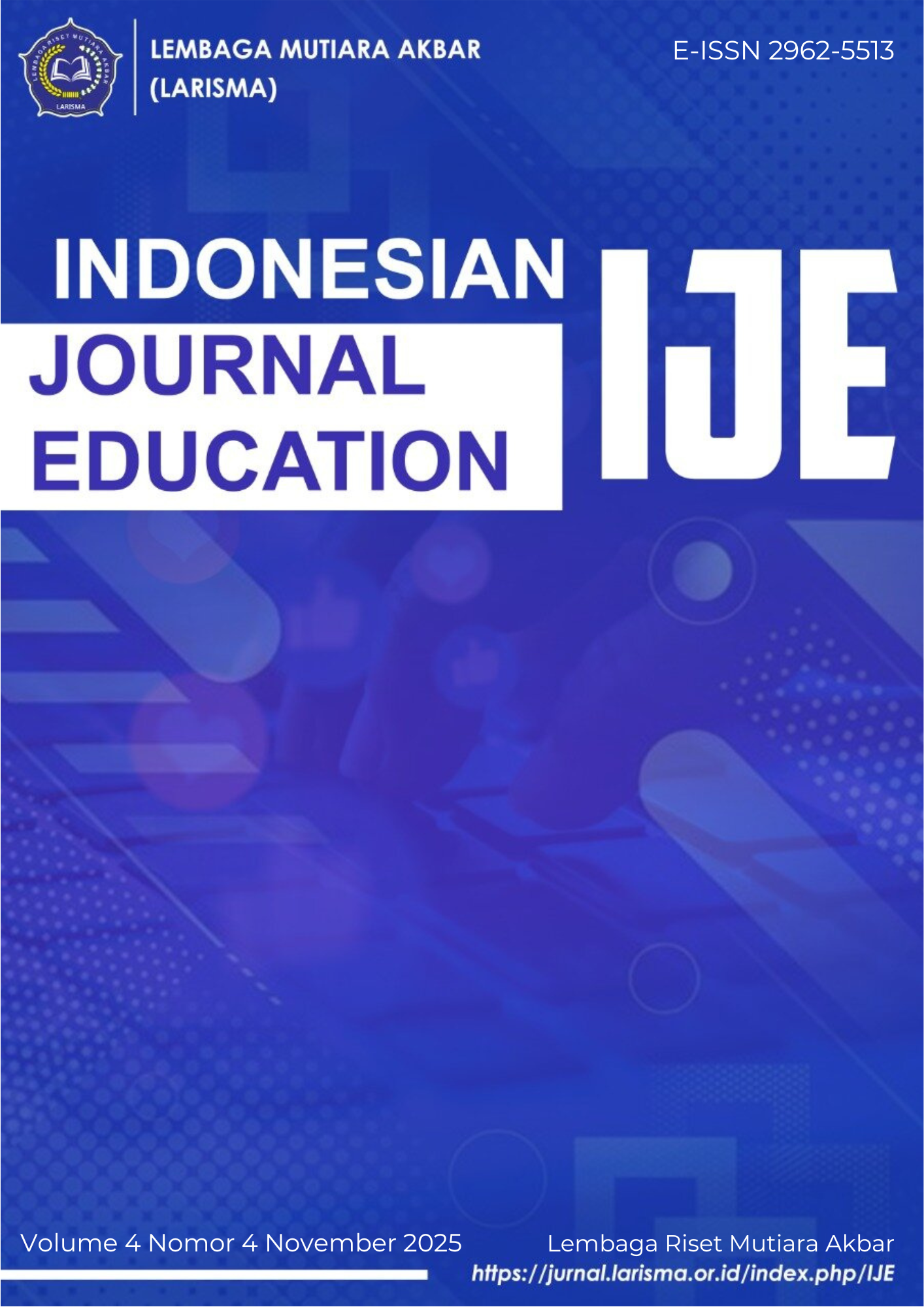Semiotic Analysis in the Music Video (MV) of Bangtan Sonyeondan's Album: The Most Beautiful Moment in Life
Main Article Content
Abstract
This study analyzes the music videos of the album "The Most Beautiful Moment in Life" by Bangtan Sonyeondan (BTS) using a semiotic approach. By applying Roland Barthes' theory, this study identifies the elements of signs, namely signifier and signified, as well as the interpretation of meaning through denotation and connotation. The music videos "I Need U," "Run," and "Epilogue: Young Forever" are the focus of the analysis, which depict themes of emotional struggle, self-discovery, and youth experiences. The results of the analysis show that the visuals in the music videos convey not only literal actions but also deeper cultural and psychological meanings, providing insight into how BTS communicates through complex narratives that resonate with their audiences. This study emphasizes the importance of semiotics in understanding the diverse meanings contained in music videos.
Article Details

This work is licensed under a Creative Commons Attribution-ShareAlike 4.0 International License.
References
Ahmadova, A. (2017). Semiotics and language: Peculiarity of language structure of Noam Chomsky. In T. Barbakadze (Ed.), Semiotics: Scientific Journal (pp. 96–101). Ilia State University & Khazar University.
Awad, S. (2020). Understanding media semiotics [Review of the book Understanding media semiotics, by M. Danesi]. Bloomsbury Academic.
Barthes, R. (1972). Mythologies (A. Lavers, Trans.). Farrar, Straus and Giroux. (Original work published 1957)
Chandler, D. (1994). Semiotics for beginners.
Chandler, D. (2017). Semiotics: The basics (3rd ed.). Routledge.
Fiske, J., & Hartley, J. (2004). Reading television. Routledge.
Ginting, P., Murni, S. M., & Pulungan, A. H. (2024). A multimodal discourse analysis of ideological identity endorsed on the university’s homepages. Theory & Practice in Language Studies (TPLS), 14(7), 2211–2221 https://doi.org/10.17507/tpls.1407.29
Hanifah, U., & Ningsih, T. S. (2023). Representation of women in the Layangan Putus film series: Semiotic analysis of Roland Barthes. KOMUNIKA: Jurnal Dakwah dan Komunikasi, 17(2), 161–173. https://doi.org/10.24090/komunika.v17i2.7659
Hasio, C., & Chen, W. (2018). Interpreting visual semiotics with the music video man in the mirror in art education. Art Education, 71(3), 45-50. https://doi.org/10.1080/00043125.2018.1437994
Jadou, S. H., & Ghabra, I. A. (2021). Barthes’ semiotic theory and interpretation of signs. International Journal of Research in Social Sciences and Humanities, 11(3), 470–482. https://doi.org/10.37648/ijrssh.v11i03.027
Jirsa, T. (2019). For the affective aesthetics of contemporary music video. Music, Sound, and the Moving Image, 13(2), 187–208. https://doi.org/10.3828/msmi.2019.11
Kim, P., & Hutt, E. (2021). K-pop as a social movement: Case study of BTS and their fandom ARMY. Journal of Student Research, 10(3), 1-15. https://doi.org/10.47611/jsrhs.v10i3.1772
Latifah, A., Dewanto, D., & Astutik, A. (2023). A semiotic analysis of visual signs and meanings on prince ali soundtrack music video from aladdin movie 2019. EL2J (English Language and Literature Journal), 2(1), 1–11. https://doi.org/10.38156/el2j.v2i1.14
Lee, W. (2018). Diversity of K-pop: A focus on race, language, and musical genre [Master’s thesis, Bowling Green State University].
Long, J., & He, J. (2021, October). Cultural semiotics and the related interpretation. In Proceedings of the 2021 International Conference on Public Relations and Social Sciences (ICPRSS 2021) (pp. 1268–1272). Atlantis Press.
Manghani, S. (2020). Neutral life: Roland Barthes’ late work–An introduction. Theory, Culture & Society, 37(4), 3–34. https://doi.org/10.1177/0263276420911425
Miles, M. B., Huberman, A. M., & Saldaña, J. (2014). Qualitative data analysis: A methods sourcebook (3rd ed.). SAGE Publications.
Oktavyanthi, I., & Kholiq, M. (2020). A semiotic analysis in music video of Blank Space by Taylor Swift. Journal of Language and Literature, 6(1), 29–37. https://doi.org/10.35760/jll.2018.v6i1.2481
Olurotimi, T. S. (2022). Semiotics: A transdisciplinary quest for meaning. International Journal of Linguistics, Literature and Translation, 5(8), 117–124. https://doi.org/10.32996/ijllt.2022.5.8.14
Rafii, M. (2024). Critical discourse analysis on online news text of public figures during Covid-19 pandemic in Indonesia. Jurnal Review Pendidikan dan Pengajaran (JRPP), 7(1), 2957–2961.
Ramadhani, R., Yuliawati, S., & Suganda, D. (2019). Semiotic analysis of the myth of eroticism in English song lyrics. International Journal of English Literature and Social Sciences, 4(4), 976–982. https://doi.org/10.22161/ijels.445
Sagimin, E. M., & Sari, R. (2020, April). A semiotic analysis on Lay’s and EXO’s selected music videos. In Twelfth Conference on Applied Linguistics (CONAPLIN 2019) (pp. 43–50). Atlantis Press.
Sandelowski, M. (2000). Focus on research methods: Whatever happened to qualitative description? Research in Nursing & Health, 23(4), 334–340. https://doi.org/10.1002/1098-240x(200008)23:4%3C334::aid-nur9%3E3.0.co;2-g
Sondheim, A. (1976). Umberto Eco, A theory of semiotics. Art Journal, 36(2), 180–186.
Suryani, A. N. (2019). Bangtan Sonyeondan (BTS) as new American idol. Rubikon: Journal of Transnational American Studies, 6(1), 28–54. https://doi.org/10.22146/rubikon.v6i1.61489
The Bangtan Theory. (2016, July 25). BTS I Need U explained. https://thebangtantheory.wordpress.com/2016/07/25/bts-i-need-u-explained/
The Bangtan Theory. (2016, July 27). BTS Run explained. https://thebangtantheory.wordpress.com/2016/07/27/bts-run-explained/
Wijayanto, C. S., & Iswari, F. (2021). Semiotics analysis of Roland Barthes’ theory on Pocari Sweat’s “Sweat for Dream” advertisement. Cultural Syndrome, 3(2), 100–108. https://doi.org/10.30998/cs.v3i2.804

